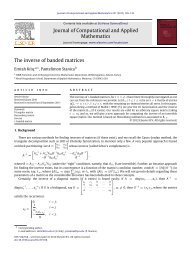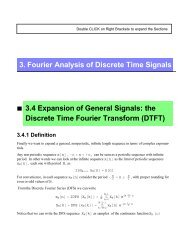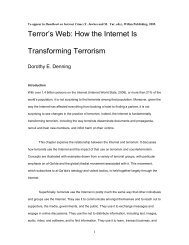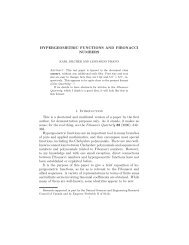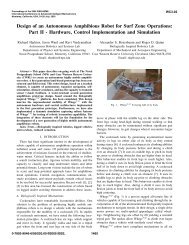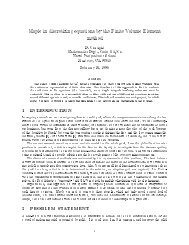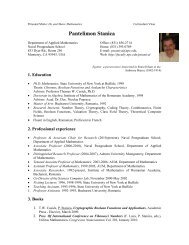Partial Solution Set, Leon §4.3 4.3.2 Let
Partial Solution Set, Leon §4.3 4.3.2 Let
Partial Solution Set, Leon §4.3 4.3.2 Let
Create successful ePaper yourself
Turn your PDF publications into a flip-book with our unique Google optimized e-Paper software.
Next we find S−1 = 1<br />
� �<br />
3 1<br />
. Then it is a simple matter to determine that<br />
2 −1 −1<br />
A = SBS −1 � � � � � � � �<br />
1 1 0 1 1 3 1 1 0<br />
=<br />
=<br />
.<br />
−1 −3 1 0 2 −1 −1 −4 −1<br />
V<br />
1. Verify that L(v1) = a11v1 + a21v2 and L(v2) = a12v1 + a22v2<br />
� � � � � � � �<br />
2 −2<br />
<strong>Solution</strong>: Note that L v1 = L = and on the other hand<br />
� � � �<br />
1<br />
� �<br />
1<br />
2 1 −2<br />
a11v1 + a21v2 = 1 · + (−4) = , so they match.<br />
1 0 1<br />
� � � � � � � �<br />
1 −1<br />
Also L v2 = L = and on the other hand<br />
�<br />
0<br />
�<br />
0<br />
� � � �<br />
2 1 −1<br />
a12v1 + a22v2 = 0 · + (−1) = , so they match.<br />
1 0 0<br />
4.3.3 <strong>Let</strong> L be the linear transformation on R 3 given by<br />
L(x) = (2x1 − x2 − x3, 2x2 − x1 − x3, 2x3 − x1 − x2) T ,<br />
and let A be the matrix representing L with respect to the standard basis for R 3 . If<br />
u1 = (1, 1, 0) T , u2 = (1, 0, 1) T , and u3 = (0, 1, 1) T , then [u1, u2, u3] is an ordered basis<br />
for R 3 .<br />
(a) Find the transition matrix U corresponding to the change of basis from [u1, u2, u3]<br />
to the standard basis.<br />
(b) Determine the matrix B representing L with respect to [u1, u2, u3].<br />
<strong>Solution</strong>:<br />
⎡<br />
(a) This is simply U = ⎣<br />
1 1 0<br />
1 0 1<br />
0 1 1<br />
⎤<br />
⎦ .<br />
2



